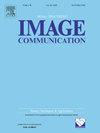Tree-based hierarchical fusion network for multimodal finger recognition
IF 2.7
3区 工程技术
Q2 ENGINEERING, ELECTRICAL & ELECTRONIC
引用次数: 0
Abstract
With digitization comes cyber threats and security vulnerabilities, biometric subject has increasingly evolved from unimodal recognition to more secure and accurate forms of multimodal. However, most existing methods focus on the optimal generation of fusion weighting parameters and the design of models with fixed architecture, and such fixed-architecture fusion methods have difficulties in accurately modeling multimodal finger features with large differences in image distributions. In this paper, a Tree-based Hierarchical Fusion Network (THiFNet) is proposed to fuse features of different modalities by adaptively exploring the common feature space using their interdependencies generated in the convolutional tree. First, in order to extract multi-scale features contained in fingerprint and finger vein images, a Residual Non-Local (Res-NL) backbone network is proposed to compute long-range point-to-point relationships while avoiding the loss of minutiae features extracted by shallow convolutional filters. Further, to adaptively bridge the cross-modal heterogeneity gap, a novel Hierarchical Convolutional Tree (HiCT) is proposed to generate interdependencies between different modalities and within the same modality via channel attention. The primary advantage is that the attention modules used for fusion are dynamically selected by the tree network, modeling a more diverse common feature space and improving accuracy within a limited recognition time. Experimental results on three multimodal finger feature datasets show the framework achieves state-of-the-art results when compared with the other methods.
基于树的多模态手指识别层次融合网络
随着数字化带来的网络威胁和安全漏洞,生物识别学科正从单模态识别向更安全、更准确的多模态识别发展。然而,现有的方法大多集中在融合加权参数的最优生成和固定结构模型的设计上,这种固定结构的融合方法难以准确建模图像分布差异较大的多模态手指特征。本文提出了一种基于树的层次融合网络(THiFNet),通过自适应地探索不同模式的共同特征空间,利用它们在卷积树中产生的相互依赖关系来融合不同模式的特征。首先,为了提取指纹和指静脉图像中包含的多尺度特征,提出了一种残差非局部(Res-NL)骨干网络来计算远程点对点关系,同时避免了浅卷积滤波器提取的细节特征的损失。此外,为了自适应地弥合跨模态异质性差距,提出了一种新的分层卷积树(HiCT),通过信道关注在不同模态之间和同一模态内产生相互依赖关系。该方法的主要优点是用于融合的关注模块是由树状网络动态选择的,可以在有限的识别时间内建模更多样化的共同特征空间,提高识别精度。在三个多模态手指特征数据集上的实验结果表明,与其他方法相比,该框架取得了较好的效果。
本文章由计算机程序翻译,如有差异,请以英文原文为准。
求助全文
约1分钟内获得全文
求助全文
来源期刊

Signal Processing-Image Communication
工程技术-工程:电子与电气
CiteScore
8.40
自引率
2.90%
发文量
138
审稿时长
5.2 months
期刊介绍:
Signal Processing: Image Communication is an international journal for the development of the theory and practice of image communication. Its primary objectives are the following:
To present a forum for the advancement of theory and practice of image communication.
To stimulate cross-fertilization between areas similar in nature which have traditionally been separated, for example, various aspects of visual communications and information systems.
To contribute to a rapid information exchange between the industrial and academic environments.
The editorial policy and the technical content of the journal are the responsibility of the Editor-in-Chief, the Area Editors and the Advisory Editors. The Journal is self-supporting from subscription income and contains a minimum amount of advertisements. Advertisements are subject to the prior approval of the Editor-in-Chief. The journal welcomes contributions from every country in the world.
Signal Processing: Image Communication publishes articles relating to aspects of the design, implementation and use of image communication systems. The journal features original research work, tutorial and review articles, and accounts of practical developments.
Subjects of interest include image/video coding, 3D video representations and compression, 3D graphics and animation compression, HDTV and 3DTV systems, video adaptation, video over IP, peer-to-peer video networking, interactive visual communication, multi-user video conferencing, wireless video broadcasting and communication, visual surveillance, 2D and 3D image/video quality measures, pre/post processing, video restoration and super-resolution, multi-camera video analysis, motion analysis, content-based image/video indexing and retrieval, face and gesture processing, video synthesis, 2D and 3D image/video acquisition and display technologies, architectures for image/video processing and communication.
 求助内容:
求助内容: 应助结果提醒方式:
应助结果提醒方式:


